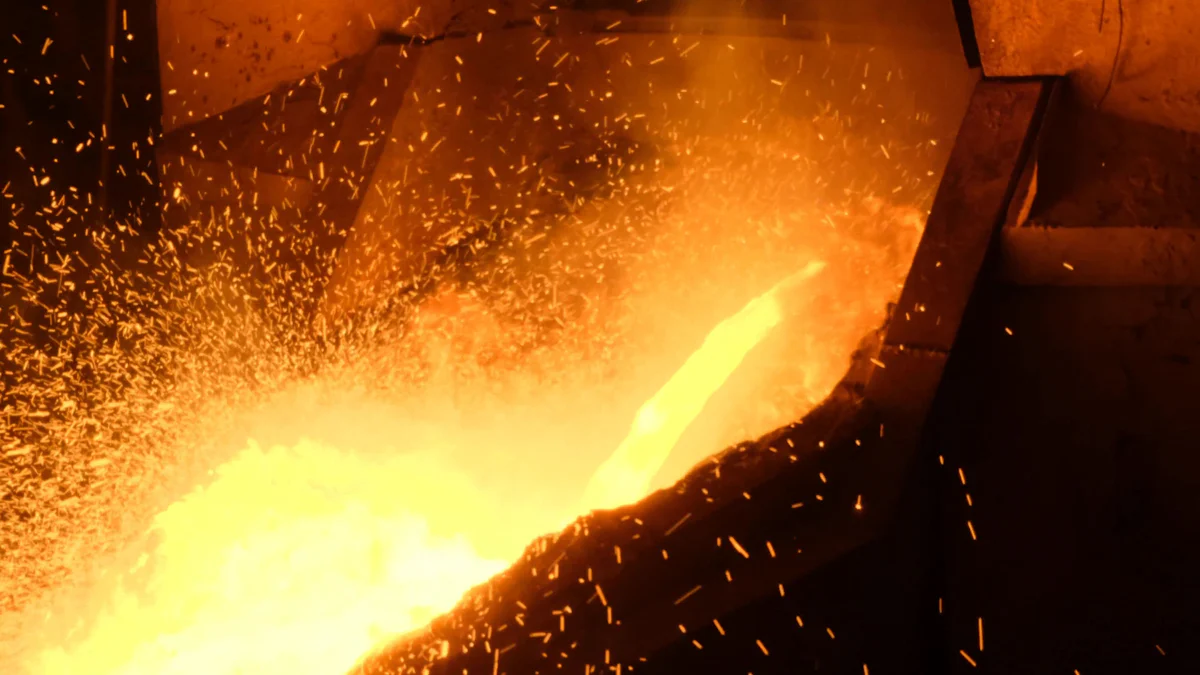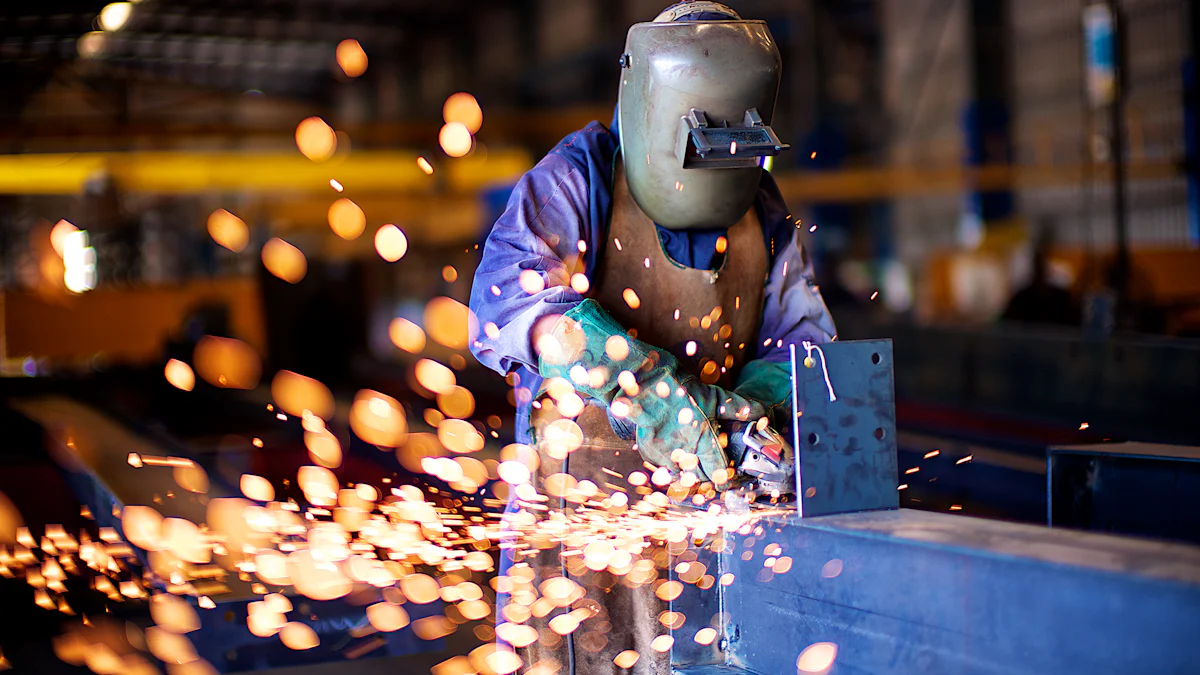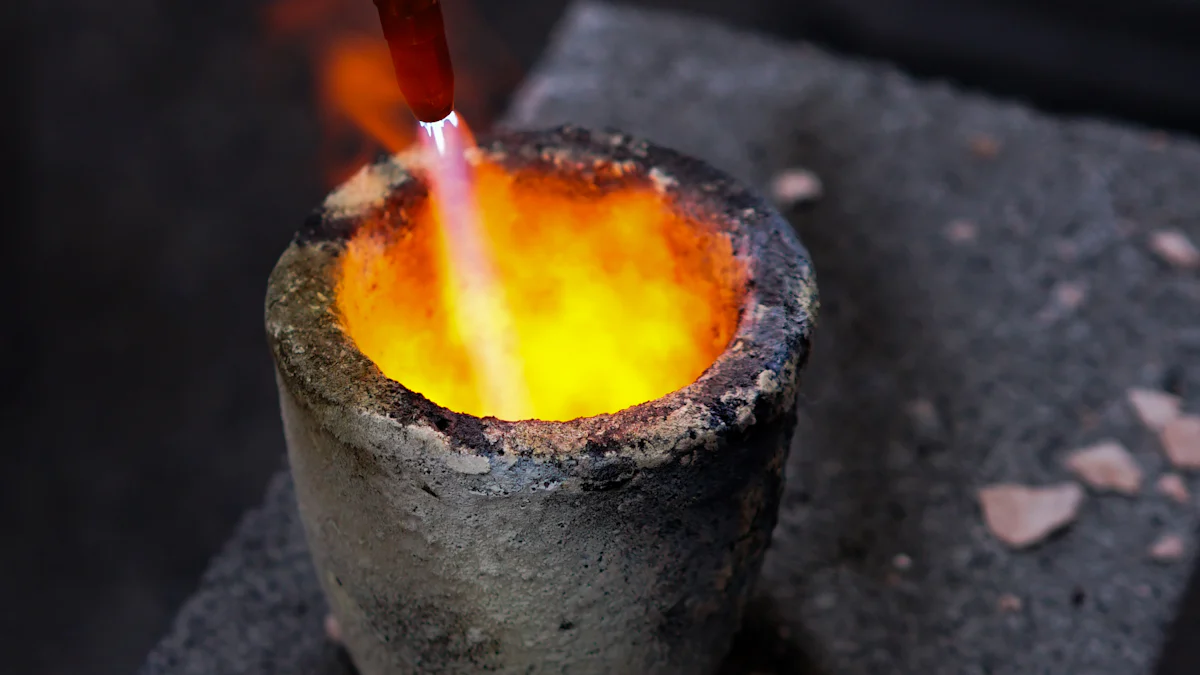How Does the Gravity Die Casting Process Work?

The gravity die casting process is a fascinating method where molten metal flows into a mold, guided solely by gravity. This technique stands out for its ability to produce high-Quality Castings with excellent surface finishes and dimensional precision. Unlike other casting methods, it requires no external force, making it cost-effective for medium or small volume production. The gravity die casting process also results in less porosity and a better grain structure, enhancing the mechanical properties of the final product. With its efficiency and precision, the gravity die casting process continues to be a preferred choice in various industries.
Key Takeaways
- Gravity die casting relies solely on gravity to fill molds, making it a cost-effective method for medium to small volume production.
- The process produces high-quality castings with excellent surface finishes and precise dimensions, ideal for industries like automotive and aerospace.
- Using reusable metal molds minimizes material waste and reduces production costs over time, enhancing economic efficiency.
- Gravity die casting allows for rapid cooling and solidification, resulting in strong, durable parts with a fine grain structure.
- This method is suitable for a variety of applications, including automotive parts, household items, and industrial equipment, due to its versatility.
- The simplicity of the gravity die casting process reduces the need for complex machinery, making it accessible for manufacturers.
- By choosing gravity die casting, manufacturers can achieve a balance of quality, cost, and efficiency, meeting stringent market demands.
The Gravity Die Casting Process

The gravity die casting process is a fascinating journey from molten metal to a finished product. Let's break it down step by step.
Step 1: Applying a Release Agent
Before anything else, they apply a release agent to the mold. This step is crucial because it ensures that the final casting can be easily removed without sticking. Think of it like greasing a cake pan before baking. The release agent also helps protect the mold, extending its life and maintaining the quality of the castings.
Step 2: Pouring Molten Metal
Next comes the exciting part—pouring the molten metal. They use a ladle or vessel to carefully pour the liquid metal into the mold cavity. The cavity is positioned on the top surface, allowing gravity to do its magic. This method doesn't require any external force, making it a simple yet effective way to fill the mold. The metal flows smoothly, filling every nook and cranny, ensuring a precise and detailed casting.
Step 3: Cooling and Solidification
Once the mold is filled, the metal begins to cool and solidify. This step is where the magic happens. As the metal cools, it takes on the shape of the mold, capturing all the intricate details. The cooling process is relatively quick, thanks to the metal molds used in the gravity die casting process. This rapid cooling results in a fine grain structure, enhancing the strength and durability of the final product.
Step 4: Part Ejection
After the metal has cooled and solidified, it's time for the next exciting step—part ejection. They open the mold carefully to reveal the newly formed casting. This step is crucial because it ensures the casting maintains its shape and quality. The release agent applied earlier plays a vital role here, allowing the casting to slide out smoothly without sticking to the mold.
Once ejected, the casting may require some finishing touches. They might trim any excess material or smooth out rough edges to ensure the final product meets the desired specifications. This attention to detail is what makes the gravity die casting process so effective in producing high-quality parts.
The entire process, from pouring to ejection, showcases the simplicity and efficiency of gravity die casting. By relying solely on gravity, this method minimizes the need for complex machinery, making it a cost-effective choice for many industries. Whether it's for automotive parts or household items, gravity die casting continues to be a reliable and efficient manufacturing process.
Applications of Gravity Die Casting
Gravity die casting finds its place in a variety of applications, thanks to its ability to produce high-quality parts with precision and efficiency. Let's explore the types of components that benefit from this process and the industries that rely on it.
Suitable Component Types
Gravity die casting is ideal for creating components that require excellent surface finishes and dimensional accuracy. This process works well for parts with simple to moderately complex shapes. It is particularly effective for producing:
- Automotive Parts: Components like engine blocks, cylinder heads, and brake components benefit from the strength and precision offered by gravity die casting.
- Household Items: Items such as cookware and decorative pieces often use this method for its smooth finish and durability.
- Industrial Equipment: Parts like pump housings and valve bodies require the robustness and reliability that gravity die casting provides.
The gravity die casting process ensures that these components meet stringent quality standards, making them suitable for demanding applications.
Industry Uses
Several industries leverage the advantages of gravity die casting to produce essential components. Here are some key sectors:
- Automotive Industry: This industry relies heavily on gravity die casting for manufacturing lightweight yet strong parts, contributing to vehicle efficiency and performance.
- Aerospace Industry: Precision and reliability are crucial in aerospace applications. Gravity die casting delivers components that meet these high standards.
- Consumer Goods: Manufacturers of consumer products appreciate the cost-effectiveness and quality of gravity die casting for producing durable goods.
- Machinery and Equipment: Industrial machinery often requires robust parts that can withstand harsh conditions, making gravity die casting an ideal choice.
By utilizing the gravity die casting process, these industries achieve a balance of quality, cost, and efficiency, ensuring their products meet market demands.
Advantages of Gravity Die Casting
Gravity die casting offers several compelling advantages that make it a popular choice in manufacturing. Let's dive into the key benefits of this process.
Cost Efficiency
Gravity die casting stands out for its cost-effectiveness. Manufacturers appreciate this method because it uses reusable metal molds, which reduces the need for frequent replacements. This durability translates to lower production costs over time. Additionally, the process minimizes material waste, further enhancing its economic appeal. By relying on gravity rather than external forces, companies can save on energy costs, making it an attractive option for medium-volume production.
Production Speed
The gravity die casting process is known for its efficient production speed. The use of permanent molds allows for rapid cooling and solidification of the molten metal. This quick turnaround means manufacturers can produce parts faster compared to other methods like sand casting. While high-pressure die casting might offer even faster speeds, gravity die casting provides a balanced approach, delivering robust parts without compromising on quality. This makes it ideal for industries that require a steady supply of components without the need for extremely high volumes.
Quality and Accuracy
One of the standout features of gravity die casting is the superior quality and accuracy of the final product. The process produces parts with excellent surface finishes and precise dimensions. The use of metal molds ensures consistent results, reducing the likelihood of defects. Compared to sand casting, gravity die casting offers better mechanical properties and a finer grain structure. This results in parts that are not only visually appealing but also strong and reliable. Industries like automotive and aerospace benefit greatly from these attributes, as they demand components that meet stringent quality standards.
Comparison to Other Casting Methods

When it comes to casting methods, each has its own strengths and weaknesses. Let's dive into how gravity die casting stacks up against other popular methods like sand casting and forging.
Gravity Die Casting vs. Sand Casting
Gravity die casting and sand casting both have their places in the manufacturing world, but they serve different needs.
-
Surface Finish and Precision: Gravity die casting shines when it comes to surface finish and dimensional precision. The metal molds used in this process create smoother surfaces and more accurate dimensions compared to sand casting. This makes gravity die casting ideal for parts that require a high-quality finish and precise measurements.
-
Production Speed: Sand casting can be slower due to the time needed to prepare sand molds for each casting. In contrast, gravity die casting uses reusable metal molds, which speeds up the production process. This efficiency makes it a better choice for medium to high-volume production runs.
-
Cost Efficiency: While sand casting might be cheaper for small batches due to lower initial mold costs, gravity die casting becomes more cost-effective as production volumes increase. The durability of metal molds reduces the need for frequent replacements, saving money in the long run.
-
Complexity of Design: Sand casting can handle more complex shapes with intricate details because the sand molds can be easily shaped. However, gravity die casting still offers good design flexibility and is suitable for parts with moderately complex geometries.
Gravity Die Casting vs. Forging
Forging and gravity die casting are both used to produce strong metal parts, but they achieve this in different ways.
-
Mechanical Properties: Forging generally produces parts with superior mechanical properties due to the way the metal is shaped under pressure. However, gravity die casting also produces robust parts with excellent mechanical strength, making it suitable for components that need durability and reliability.
-
Design Flexibility: Gravity die casting offers more design flexibility than forging. It can produce parts with complex shapes and intricate details, which might be challenging to achieve with forging.
-
Cost and Efficiency: Forging can be more expensive due to the need for specialized equipment and the energy required to shape the metal. Gravity die casting, on the other hand, is more cost-effective for medium to high-volume production, thanks to its efficient use of reusable molds and reliance on gravity rather than external forces.
-
Surface Finish: Gravity die casting provides a better surface finish compared to forging. This reduces the need for additional finishing work, saving time and resources.
The gravity die casting process offers a straightforward yet effective method for producing high-quality metal parts. By utilizing gravity to fill molds, this process ensures precision and consistency, making it ideal for industries like automotive and aerospace. Its ability to produce components with excellent surface finishes and dimensional accuracy sets it apart from other methods. Industries benefit from its cost efficiency and rapid production speed, especially when high volume and consistent accuracy are required. Whether for automotive parts or household items, gravity die casting remains a reliable choice for manufacturers seeking quality and efficiency.
FAQ
What is gravity die casting?
Gravity die casting is a manufacturing process where molten metal flows into a mold using gravity. This method creates high-quality parts with excellent surface finishes and precise dimensions. It's widely used in industries like automotive and aerospace due to its efficiency and reliability.
How does gravity die casting differ from other casting methods?
Gravity die casting uses reusable metal molds, unlike sand casting, which uses sand molds. This results in smoother surfaces and more accurate dimensions. Compared to forging, gravity die casting offers more design flexibility and better surface finishes, making it suitable for complex shapes.
What materials are commonly used in gravity die casting?
Non-ferrous alloys such as aluminum, copper, and zinc are commonly used in gravity die casting. These materials offer excellent mechanical properties and are ideal for producing lightweight yet strong components.
Why is gravity die casting considered cost-effective?
Gravity die casting is cost-effective because it uses durable metal molds that can be reused multiple times. This reduces the need for frequent replacements, lowering production costs. Additionally, the process minimizes material waste and energy consumption, further enhancing its economic appeal.
What are the typical applications of gravity die casting?
Gravity die casting is used to produce automotive parts like engine blocks and brake components, household items such as cookware, and industrial equipment like pump housings. Its ability to create precise and durable parts makes it ideal for these applications.
How does the cooling process affect the final product in gravity die casting?
The cooling process in gravity die casting is rapid due to the metal molds. This quick cooling results in a fine grain structure, enhancing the strength and durability of the final product. The process captures intricate details, ensuring high-quality castings.
Is gravity die casting suitable for high-volume production?
Yes, gravity die casting is well-suited for moderate to high-volume production, ranging from 250 to 50,000 units per annum. Its efficiency and consistent quality make it a preferred choice for industries requiring large quantities of components.
What are the advantages of using gravity die casting in the automotive industry?
In the automotive industry, gravity die casting produces lightweight yet strong parts, contributing to vehicle efficiency and performance. The process ensures precise dimensions and excellent surface finishes, meeting the industry's stringent quality standards.
Can gravity die casting accommodate complex designs?
Gravity die casting can accommodate moderately complex designs. While sand casting handles more intricate shapes, gravity die casting still offers good design flexibility, making it suitable for parts with detailed geometries.
How does gravity die casting contribute to environmental sustainability?
Gravity die casting contributes to environmental sustainability by minimizing material waste and energy consumption. The use of reusable metal molds reduces the need for new resources, making it an environmentally friendly manufacturing option.















